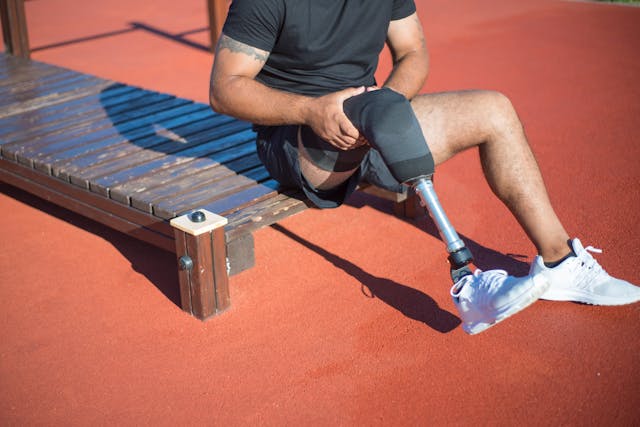For millions of people around the world, prosthetic limbs offer a second chance at mobility, independence, and confidence. However, high costs have often been a major barrier preventing many from accessing high-quality prosthetic solutions. Traditional prosthetics can be expensive to manufacture, fit, and maintain, making them inaccessible to many individuals, especially in developing countries.
But change is coming. New technology, advanced materials, and innovative production methods are making prosthetics more affordable than ever before. Between 2025 and 2030, the prosthetics industry is set to revolutionize accessibility, ensuring that cost is no longer a limitation. At Robobionics, we are committed to making high-quality, affordable prosthetic solutions a reality for everyone.
Let’s explore the future of affordable prosthetics, how technology is driving down costs, and what this means for individuals in need of comfortable, durable, and functional artificial limbs.
1. How 3D Printing is Driving Down Prosthetic Costs
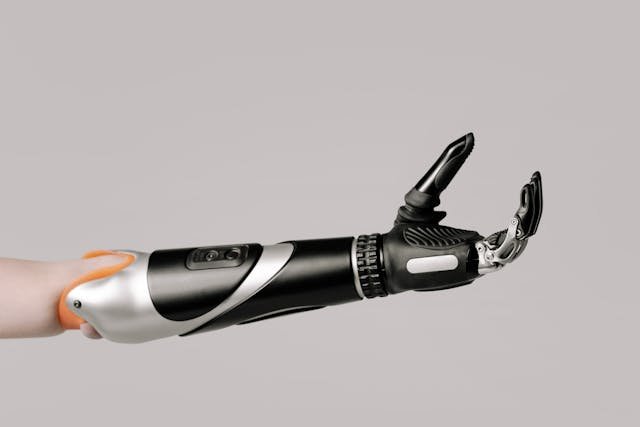
One of the biggest breakthroughs in affordable prosthetic manufacturing has been 3D printing technology. Unlike traditional methods that require complex molding, machining, and expensive materials, 3D printing allows for low-cost, on-demand production of customized prosthetic limbs.
With 3D printing, prosthetic components can be designed digitally and printed using cost-effective materials, significantly reducing waste, production time, and labor costs. More importantly, 3D printing enables rapid customization, allowing each prosthetic to be tailored to the user’s exact limb structure and movement needs without the need for expensive manual adjustments.
By 2030, 3D-printed prosthetics will be widely available at a fraction of today’s costs, ensuring that individuals from all economic backgrounds can access high-quality, personalized prosthetic solutions without financial strain.
2. AI and Machine Learning: Making Prosthetic Fittings Faster and Cheaper
Fitting a prosthetic limb has traditionally been a lengthy and expensive process, requiring multiple clinic visits, expert adjustments, and trial fittings. However, AI and machine learning are changing that by making prosthetic fitting and customization faster, more accurate, and cost-effective.
AI-powered scanning technology can analyze a user’s limb structure, movement patterns, and muscle activity to create a perfectly tailored prosthetic fit in minutes, reducing the need for expensive, time-consuming adjustments. Additionally, machine learning algorithms can predict pressure points and comfort issues, ensuring a better fit from the very beginning.
By 2030, AI-driven prosthetic fittings will replace traditional trial-and-error methods, drastically reducing clinic costs and wait times, making prosthetic limbs more accessible to everyone.
3. Open-Source Prosthetics: A Community-Driven Approach to Affordability
One of the most exciting developments in prosthetic accessibility is the rise of open-source prosthetics, where designs are shared freely, allowing people to build and customize their own prosthetic limbs at low cost.
Organizations and researchers around the world are now developing open-source blueprints that can be downloaded and 3D-printed anywhere, making prosthetic limbs available without the high price tag of traditional manufacturing. These community-driven projects encourage global collaboration, ensuring that affordable prosthetic designs continue to improve and evolve.
By 2030, open-source prosthetic technology will allow anyone with access to a 3D printer and basic tools to create a functional, comfortable prosthetic limb, reducing reliance on expensive commercial models.
4. Affordable Materials: The Shift from Expensive Metals to Cost-Effective Biodegradable Alternatives
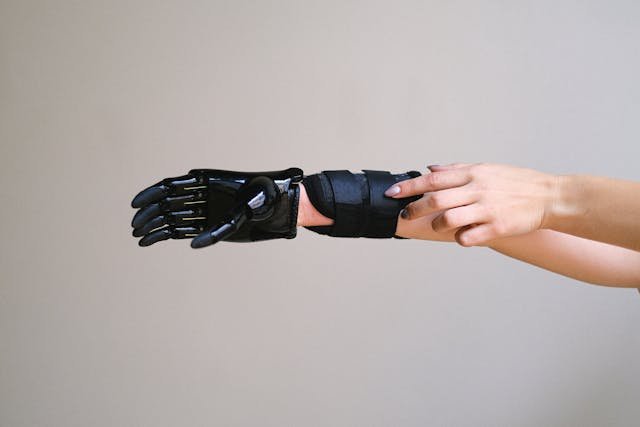
Traditional prosthetic limbs are often made from titanium, carbon fiber, and high-performance plastics, which can be expensive to source and manufacture. Now, researchers are developing low-cost, biodegradable alternatives that offer the same durability at a fraction of the cost.
New prosthetic materials, such as plant-based resins, bamboo composites, and algae-derived bioplastics, provide lightweight, strong, and flexible solutions that are both cost-effective and environmentally friendly. These materials also allow for faster production and easier repairs, further reducing the overall cost of prosthetic ownership.
By 2030, biodegradable and sustainable prosthetic materials will make high-quality artificial limbs more affordable, ensuring cost is no longer a barrier to mobility.
5. Government and NGO Initiatives: Funding the Future of Affordable Prosthetics
Many governments and non-profit organizations (NGOs) are now investing in affordable prosthetic solutions, recognizing the importance of mobility for economic and social independence. These initiatives aim to subsidize costs, provide free prosthetic limbs to those in need, and establish prosthetic production centers in underserved areas.
Countries with strong healthcare policies are already providing funding and grants to prosthetic manufacturers who focus on low-cost solutions, ensuring that more people have access to mobility aids. At the same time, NGOs and humanitarian organizations are setting up community-based prosthetic clinics, offering free or heavily subsidized prosthetic fittings.
By 2030, global efforts from governments and NGOs will ensure that financial limitations no longer prevent individuals from accessing life-changing prosthetic solutions.
6. The Future of Subscription-Based Prosthetic Services
Another innovative approach to affordable prosthetics is the introduction of subscription-based prosthetic services, where users pay a small monthly fee instead of a large upfront cost.
This model ensures that prosthetic wearers receive continuous access to repairs, upgrades, and replacements, without the financial burden of purchasing a new limb outright. Subscription plans can also include remote monitoring, AI-driven adjustments, and training sessions, making prosthetic use easier and more cost-effective.
By 2030, subscription-based prosthetic services will offer an affordable alternative to traditional one-time purchases, ensuring that users receive the best care and technology without breaking the bank.
7. The Impact of Mass Production and Automation on Prosthetic Prices
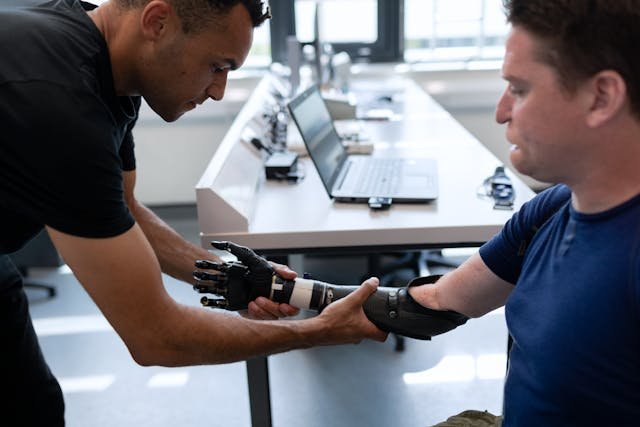
Advancements in robotic manufacturing and automated production lines are reducing the cost of prosthetic manufacturing. Instead of relying on handcrafted components, automated systems can mass-produce prosthetic parts with precision and consistency, bringing down costs significantly.
With AI-driven quality control, automated factories can produce prosthetic limbs faster, with fewer defects, and at a lower cost. This also means that spare parts and repairs will be more accessible, reducing the lifetime cost of owning a prosthetic limb.
By 2030, mass production and automation will make high-quality prosthetic limbs more affordable, ensuring that even advanced models are within reach for users worldwide.
8. Community-Based Prosthetic Centers: Bringing Affordable Solutions Closer to Users
One of the biggest challenges in accessing prosthetics is geographical distance. Many people, especially in rural areas, do not have access to prosthetic clinics or rehabilitation centers, making even the most affordable prosthetics difficult to obtain.
To solve this, community-based prosthetic centers are emerging as a way to bring customized, low-cost prosthetics directly to those in need. These centers use local materials, 3D printing, and AI-driven fitting solutions to provide prosthetic limbs without the need for expensive hospital visits.
By 2030, community-driven prosthetic initiatives will be widespread, ensuring that people in remote and underserved areas can receive affordable, high-quality artificial limbs without needing to travel long distances.
9. Advances in Modular and Adjustable Prosthetic Designs
Traditional prosthetic limbs are often one-size-fits-all, requiring costly adjustments and replacements over time. However, modular prosthetics are changing the game by allowing users to swap out or upgrade parts instead of replacing the entire limb.
These modular designs enable users to adjust limb length, joint stiffness, and grip strength, making the prosthetic more versatile and long-lasting. This reduces the need for frequent replacements, saving users thousands of dollars over their lifetime.
By 2030, adjustable, modular prosthetic designs will be the norm, ensuring that users can customize their limbs without the financial burden of purchasing an entirely new device.
10. Reducing Maintenance Costs with Self-Repairing Prosthetic Materials
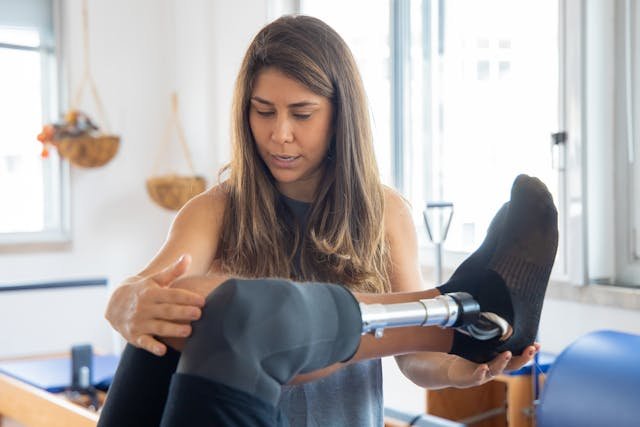
Prosthetic limbs, like any mechanical device, require regular maintenance and repairs, which can be costly over time. However, scientists are developing self-healing materials that allow prosthetic limbs to repair minor damage on their own.
These materials use microcapsules filled with repair agents, which automatically activate when the prosthetic surface is damaged, sealing cracks and restoring structural integrity. This means fewer expensive repair visits and longer-lasting prosthetics.
By 2030, self-repairing prosthetic materials will significantly reduce maintenance costs, making long-term prosthetic use more affordable for everyone.
11. Insurance and Financial Support: Making Prosthetics More Accessible
Many individuals struggle to afford prosthetics because insurance coverage is often limited, leaving them to pay high out-of-pocket costs. However, new policies and financial assistance programs are making prosthetics more affordable for those in need.
Governments and private insurance companies are starting to cover a larger portion of prosthetic expenses, while microfinance and crowdfunding platforms are helping individuals raise funds for their prosthetic needs. Some organizations are also offering prosthetic leasing programs, where users can pay small monthly fees instead of large upfront costs.
By 2030, insurance companies and financial assistance programs will play a major role in reducing the cost barrier, ensuring that more people have access to prosthetic solutions without financial stress.
12. The Role of Local Manufacturing in Reducing Costs
Most prosthetic components are manufactured in large-scale factories located in developed countries, increasing import costs and delivery delays for users in developing regions. However, localized prosthetic production is changing this by bringing manufacturing closer to the people who need it most.
With small-scale 3D printing hubs, decentralized prosthetic workshops, and AI-driven customization, local manufacturers can produce affordable prosthetics using regionally available materials, cutting down costs and making devices more accessible and culturally appropriate.
By 2030, local prosthetic manufacturing will ensure that high-quality, affordable prosthetics are available in every part of the world, eliminating shipping costs and production delays.
13. The Growing Impact of Wearable Technology in Prosthetic Affordability
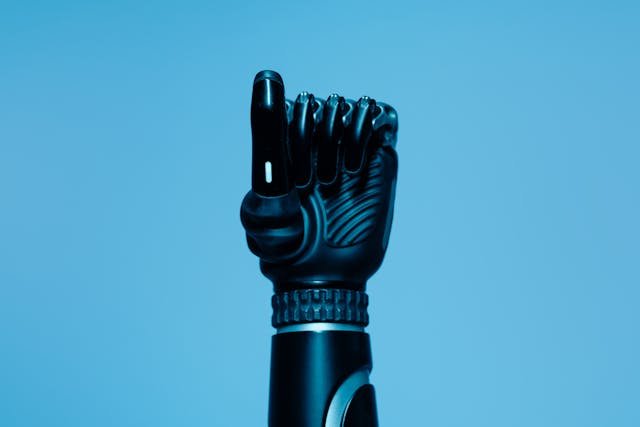
Prosthetic technology is becoming more advanced with wearable AI, but this does not have to mean higher costs. Innovations in smart prosthetic sensors, cloud-connected adjustments, and AI-driven rehabilitation are actually reducing the need for expensive manual adjustments.
For example, smart sensors in robotic limbs can self-calibrate, eliminating the need for frequent clinical visits. Cloud-based AI can track user movement and provide remote adjustments, allowing prosthetists to fine-tune settings without in-person appointments.
By 2030, wearable technology will make prosthetic maintenance and adjustments easier and more affordable, allowing users to get expert support remotely without extra costs.
14. The Psychological and Social Impact of Affordable Prosthetics
Beyond the financial and medical benefits, affordable prosthetics also bring significant psychological and social improvements. Many individuals who need prosthetic limbs avoid seeking treatment due to financial worries, leading to reduced mobility, isolation, and loss of confidence.
With more affordable solutions, people can regain independence, return to work, and participate in social activities without financial burden. This not only improves mental well-being but also allows them to contribute economically and socially to their communities.
By 2030, affordable prosthetics will ensure that cost is no longer a reason for individuals to feel left behind, empowering them to live fuller, more active lives.
15. The Future of Prosthetic Pricing: What to Expect by 2030
With advancements in technology, policy changes, and community-driven solutions, the cost of prosthetics is expected to drop significantly in the coming years. By 2030, prosthetic limbs will be:
- 50% cheaper due to mass production, 3D printing, and biodegradable materials
- More accessible with government funding, NGO support, and insurance coverage
- Easier to maintain with self-repairing materials and AI-driven adjustments
- More customizable thanks to modular designs and open-source prosthetic innovations
This means that no one will be denied mobility due to financial limitations, ensuring that everyone has access to high-quality, life-enhancing prosthetic solutions.
16. How Robotics and Automation Will Make Prosthetics More Affordable
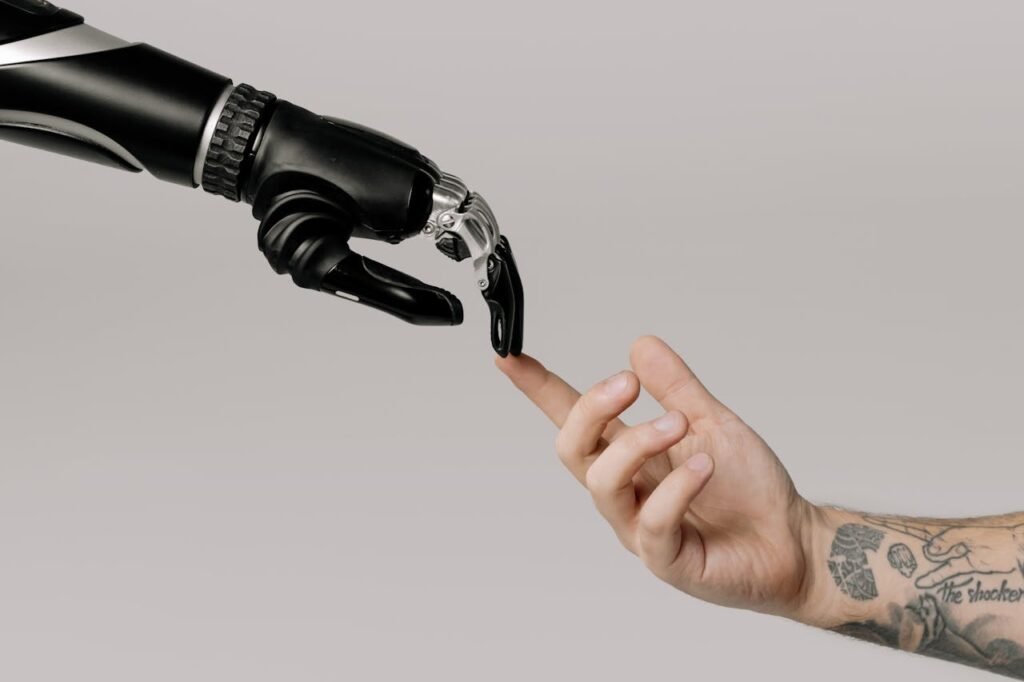
Robotics and automation are playing a key role in reducing prosthetic costs, making the production process faster, more efficient, and less labor-intensive. Traditionally, prosthetic limbs required handcrafted components, expert assembly, and time-consuming fittings, which increased costs. However, robotic manufacturing is now allowing for mass production with higher precision and lower expenses.
Automated robotic arms can construct prosthetic parts in minutes, ensuring consistent quality at a fraction of traditional costs. Additionally, AI-driven quality control systems can detect defects instantly, reducing waste and ensuring that only the best products reach users.
By 2030, fully automated prosthetic manufacturing plants will help cut costs by up to 60%, making high-performance artificial limbs available at a price within reach for millions of users worldwide.
17. The Impact of Cloud-Connected Prosthetics on Reducing Costs
Cloud technology is changing the way prosthetics are monitored, adjusted, and maintained, reducing the need for frequent in-person clinic visits. Traditionally, users had to schedule appointments, pay for consultations, and travel to clinics for even minor adjustments. With cloud-connected prosthetics, these adjustments can now be made remotely using AI-driven diagnostics.
For example, a smart prosthetic hand can detect grip strength issues and send an automatic alert to the user’s mobile app, allowing them to adjust settings instantly without visiting a specialist. Similarly, prosthetic legs with smart sensors can automatically recalibrate for better balance and comfort, eliminating the need for expensive manual tuning.
By 2030, cloud-based AI support will drastically cut prosthetic maintenance costs, ensuring that users receive real-time assistance without additional expenses.
18. The Rise of AI-Powered Wearable Prosthetic Training
Learning to use a prosthetic limb can be challenging, often requiring multiple training sessions with specialists, which adds to the overall cost. However, AI-powered wearable training systems are making this process cheaper and more accessible.
These smart training tools use motion tracking, virtual simulations, and real-time feedback to help users adjust to their prosthetic limbs quickly and efficiently. Instead of relying on expensive physiotherapy sessions, users can train from the comfort of their homes with AI-driven guidance.
By 2030, AI-powered wearable prosthetic training programs will allow users to master their prosthetic limbs faster, reducing rehabilitation costs and making adaptation more seamless.
19. Subscription-Based Prosthetics: The Future of Affordable Mobility
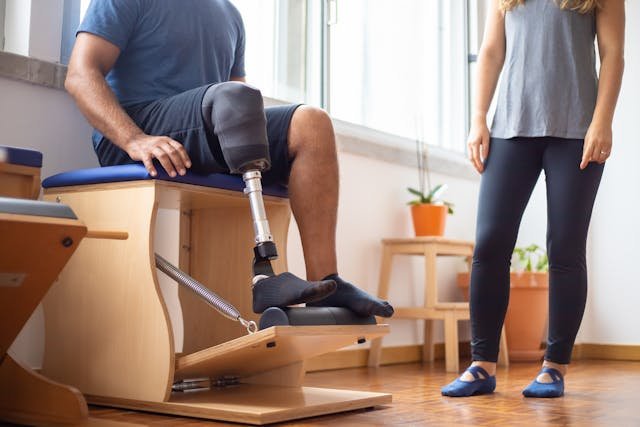
Just like software and mobile phones, prosthetics are now moving toward a subscription-based model, allowing users to pay monthly instead of making a large one-time purchase.
Subscription-based prosthetic services offer:
- Lower upfront costs, making high-quality prosthetics more accessible
- Automatic upgrades, ensuring users always have the latest technology
- Regular maintenance and support, reducing unexpected expenses
By 2030, subscription-based prosthetics will be a mainstream option, allowing users to access top-tier technology without financial stress.
20. The Role of Corporate Social Responsibility (CSR) in Affordable Prosthetics
Many corporations are now investing in prosthetic accessibility as part of their Corporate Social Responsibility (CSR) programs. Large tech companies, medical firms, and social impact organizations are partnering with prosthetic manufacturers to develop low-cost solutions for underserved populations.
These partnerships help fund research, subsidize prosthetic costs, and ensure that free or low-cost prosthetics are available in regions where they are most needed. Many companies are also donating 3D printing technology to local prosthetic centers, allowing communities to produce their own affordable limbs.
By 2030, CSR-driven prosthetic initiatives will ensure that cost is no longer a limitation, making high-quality prosthetic solutions available to everyone, regardless of financial status.
Final Thoughts: The Future of Prosthetics is Affordable and Accessible
The future of prosthetic technology is no longer defined by high costs and limited availability. With 3D printing, AI-driven customization, biodegradable materials, and mass production, prosthetic limbs are becoming more affordable, accessible, and high-quality than ever before.
At Robobionics, we are committed to ensuring that cost is never a barrier to mobility. Through innovative technology, partnerships with NGOs, and research into low-cost materials, we are working to make advanced prosthetic solutions available to everyone—regardless of their financial situation.
If you or a loved one is looking for an affordable, high-performance prosthetic solution, book a free demo with Robobionics today and take the first step toward regaining independence without financial worry!



